
You’re staring at your screen, juggling three different tools just to write one decent piece of content. One for SEO research, another for writing, and a third to check if your copy will actually convert. Sound familiar? If you’ve been searching for Anyword vs Outranking to consolidate your workflow, finally, you’re in the right place. We at TechDictionary spent weeks testing both platforms to help you make the smartest choice for your content needs in 2025. Let’s dive in!
Let’s cut to the chase. Here’s what you need to know about the Anyword vs Outranking debate:
Here’s a side-by-side breakdown to help you see the differences at a glance:
|
Feature |
Anyword |
Outranking |
| Primary Focus | Marketing copy & conversions | SEO content & rankings |
| Best For | Ads, emails, social media | Blog posts, articles, SEO strategy |
| AI Prediction | 82% performance accuracy | No performance prediction |
| SEO Tools | Limited SEO features | 40+ optimization factors |
| Content Length | Short- to medium-form | Long-form (2000+ words) |
| SERP Analysis | Not available | Advanced competitor insights |
| Keyword Research | Basic integration | Advanced clustering |
| Internal Linking | Not available | AI-powered suggestions |
| Brand Voice | Advanced customization | Basic style guides |
| Learning Curve | Easy (beginner-friendly) | Moderate (needs SEO knowledge) |
| Best Use Case | Ad campaigns & email marketing | Organic traffic growth |
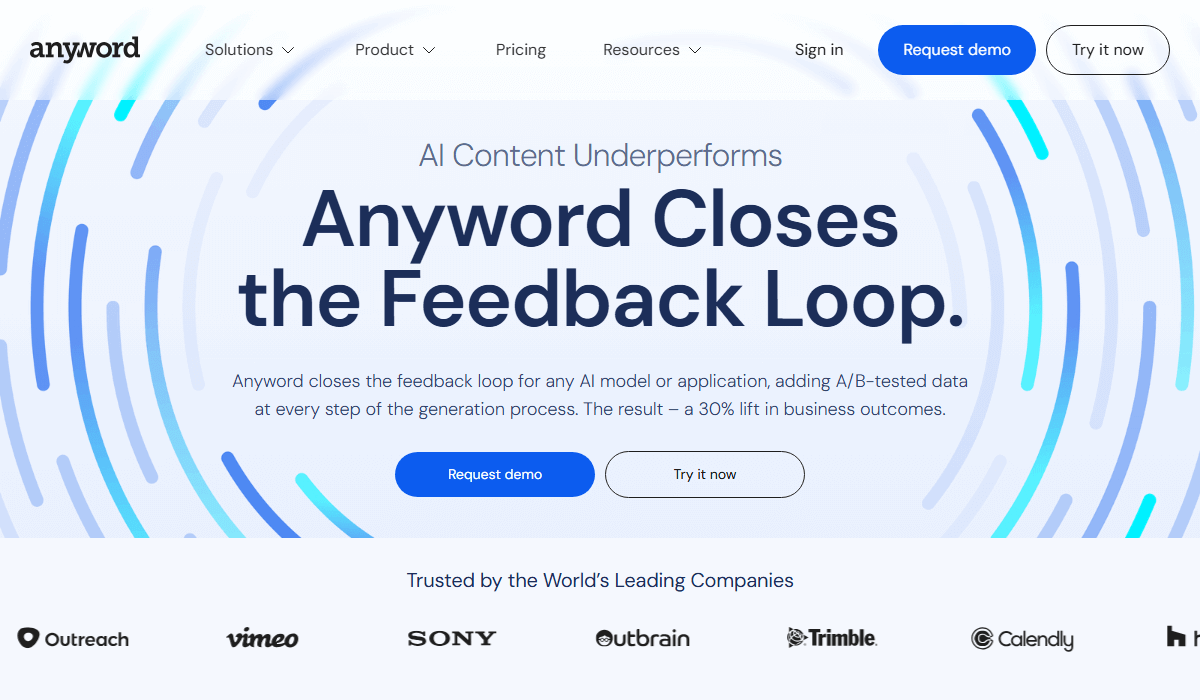
Anyword predicts text performance based on real data
When we first looked at Anyword, we thought it was just another AI copywriting platform. But we quickly realized it does something totally different from other tools.
It doesn’t just write text. It predicts whether that text will actually get results before you even publish it.
We like to think of it as having a data expert and a creative writer working together on every single sentence.
Here’s why it’s not just guessing: The platform learned from billions of real marketing messages and data on what actually worked. This means when Anyword “scores” your ad copy or email subject line, it’s using real conversion data from similar campaigns. For a team like ours, always stuck doing endless A/B tests, this is a really big deal.
What really amazed our team right away was the Predictive Performance Score. This feature gives a grade to every piece of writing you create, showing how well it might connect with your audience. When we tried it out, we were really impressed: it correctly picks the best version 82% of the time.
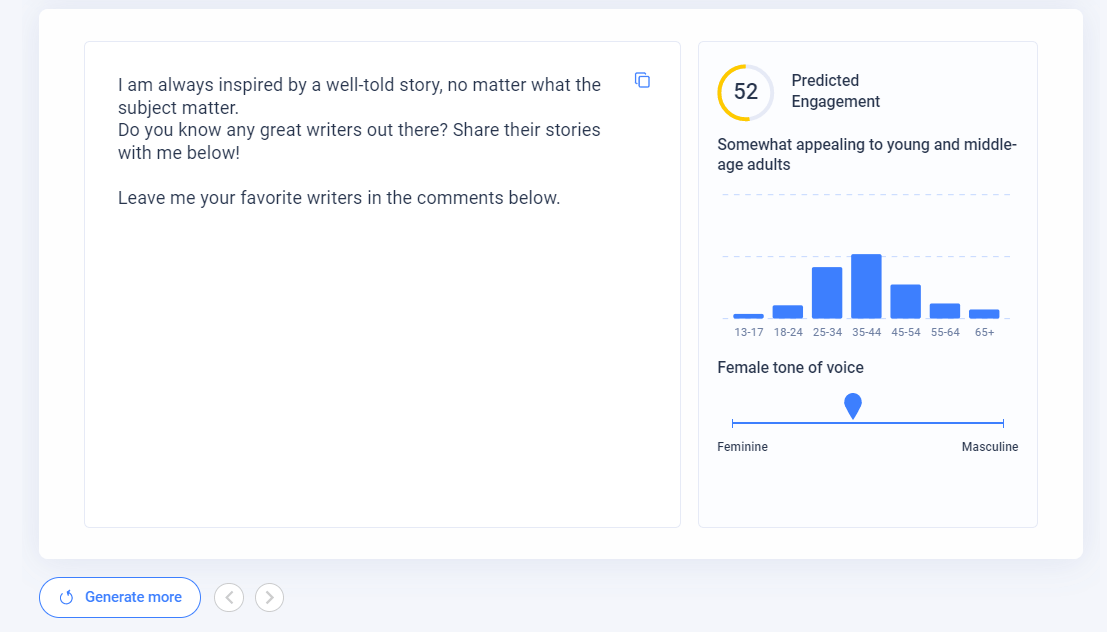
Anyword’s Predictive Performance Score improves content selection
In comparison, a common tool like GPT-4 only gets it right 52% of the time, which is like flipping a coin. For our team, this is a huge help. Now, we can quickly make lots of different versions, see which one is likely to get the most responses, and best of all, we don’t have to wait weeks for results from A/B tests anymore.
If you’re running paid campaigns, Anyword becomes your secret weapon. The platform generates ad copy for Facebook, Google, LinkedIn, and Instagram with performance predictions built in. You can target specific demographics, adjust tone, and even test different value propositions—all before spending a cent on an ad budget.

Anyword optimizes ad copy with demographic targeting
We especially loved the demographic targeting feature. You can specify age ranges, interests, and pain points, and Anyword adjusts the messaging accordingly.
You may be interested in:
Anyword vs Jasper: Which is the best for Writers in 2025?
Anyword vs Copy.ai: Which is the best for Writers in 2025?
Anyword doesn’t stop at ads. It analyzes your landing pages and product descriptions, suggesting improvements based on what actually drives conversions. The tool evaluates headlines, CTAs, benefit statements, and overall message clarity.
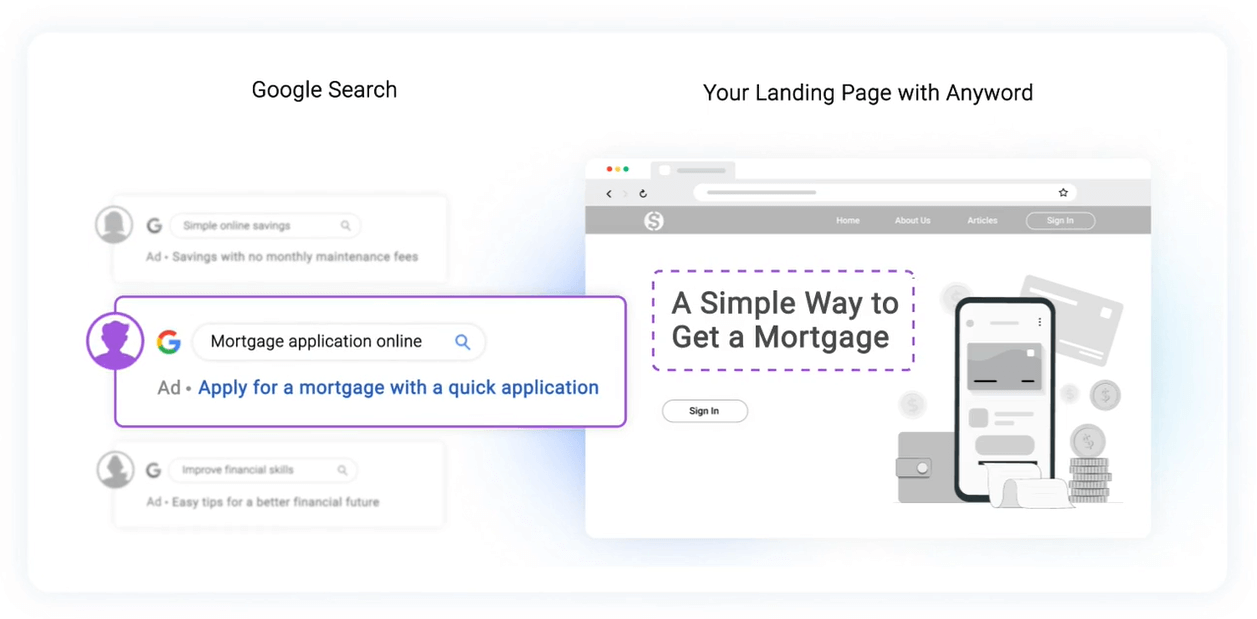
Anyword optimizes landing and product pages for conversions
For e-commerce brands, this feature alone can justify the subscription cost. Better product descriptions mean higher conversion rates, plain and simple.
While Anyword isn’t primarily an SEO tool, it does offer blog post generation with over 300 templates. However, this is where the platform shows its limitations. The blog features are adequate for shorter posts but lack the comprehensive SEO optimization that dedicated tools provide.
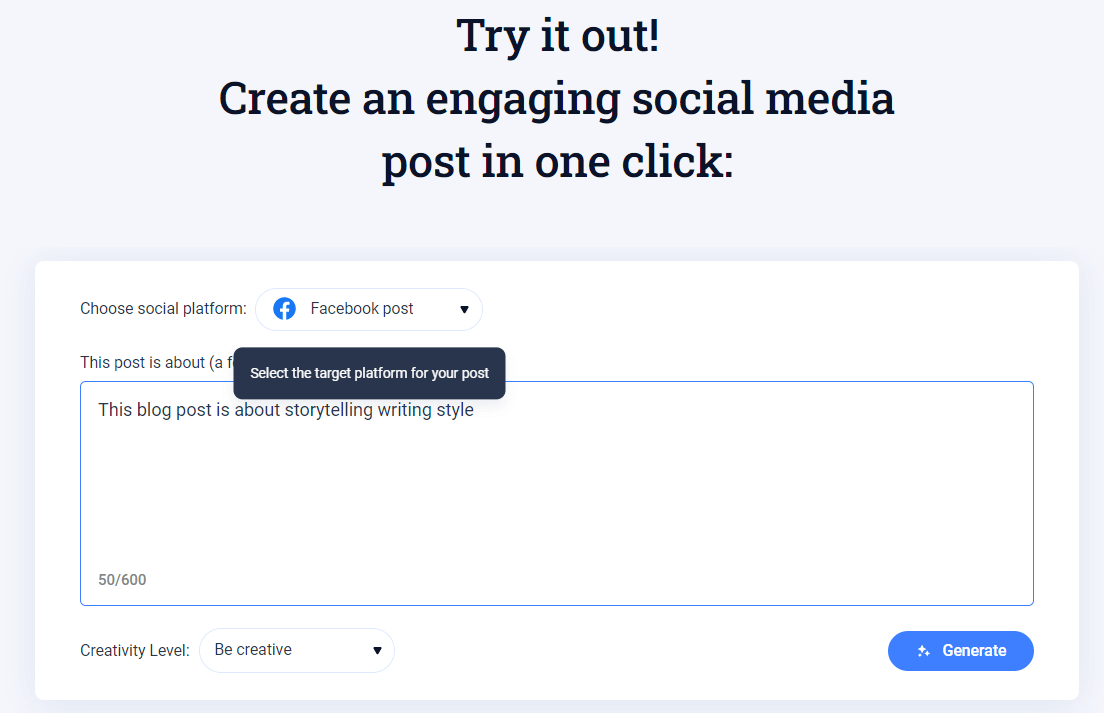
Anyword offers basic blog post generation, limited SEO
We think anyone doing email marketing will get a lot of value from this. We used it to create subject lines, preview text, and the main body of our emails. Everything it writes is focused on getting better open rates and click-throughs.
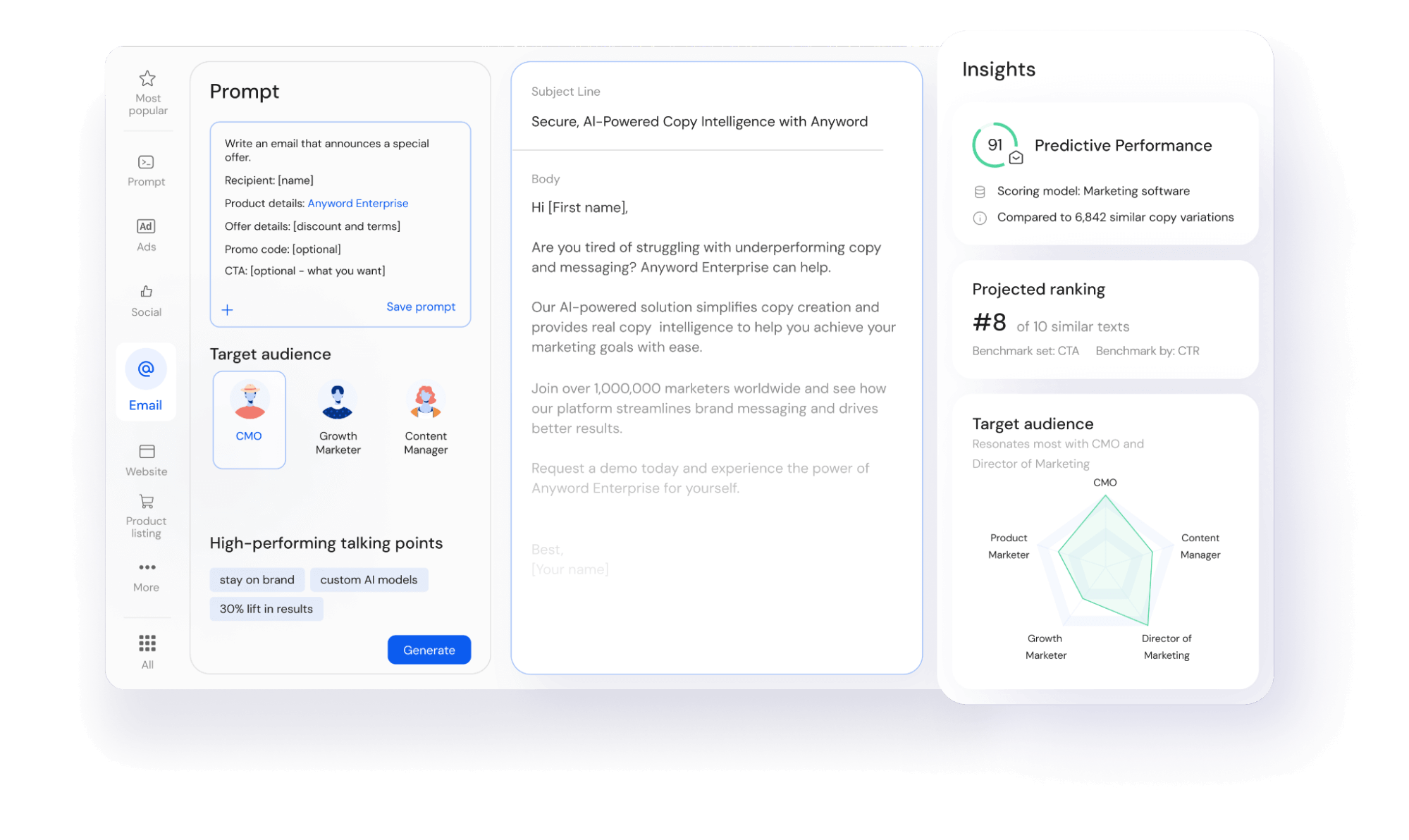
Anyword enhances email and SMS for better engagement
We also found its SMS optimization to be just as strong. It’s great at helping you write those very short messages that get people to act (or convert), which is really tough when you have strict character limits.
Our team found this feature incredibly valuable. It basically lets you create custom AI models that are trained only on your brand’s content. We tried it by “feeding” the system our best-performing content along with our internal messaging guidelines.
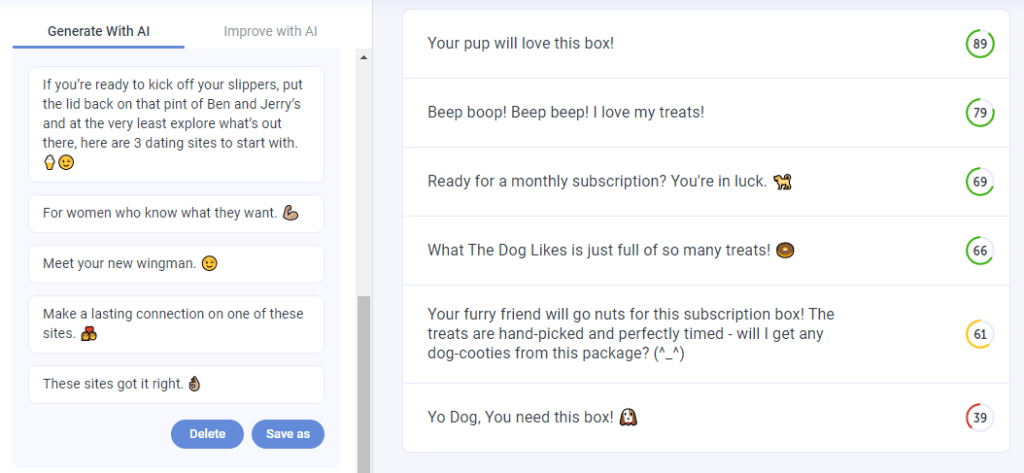
Anyword’s “Custom Mode” replicates brand voice and style
Anyword’s AI then learned to replicate our specific brand voice and style. The biggest benefit for us is that it ensures everyone on the marketing team stays on-brand and consistent.
|
Pros |
Cons |
| ✅ Industry-leading 82% performance prediction accuracy
✅ Enterprise-grade security (SOC 2, ISO 27001, GDPR, HIPAA compliant) ✅ Generates multiple variations instantly for A/B testing ✅ Advanced brand voice customization ✅ Excellent for short-form marketing copy ✅ Integration with ChatGPT, Notion, and major ad platforms |
❌ Limited SEO capabilities compared to specialized tools
❌ The credit system can be restrictive on lower-tier plans ❌ Not ideal for long-form SEO content ❌ Steep learning curve to maximize all features |

Outranking focuses on SEO with “Concepts” for optimized content
Our team found that Outranking has a very different goal. It was built for one main purpose: to help us create content that ranks on search engines. It’s a platform that combines SEO research, content strategy, and AI writing into one smooth workflow.
What makes it unique is the “Concepts” feature. Instead of the AI just guessing, it analyzes the top-ranking pages for your target keyword. It identifies why they are successful and helps you build something even better. This means you don’t get empty “AI fluff.” You get content that is truly optimized based on real SERP data.
When our team tested the AI Powered SEO, we saw it’s not just a simple keyword counter. It deeply analyzes factors like Google’s E-E-A-T criteria and semantic relationships. It also looks at content structure, internal linking opportunities, and competitive gaps. The platform showed us exactly what the top-ranking pages are doing, which helped us understand exactly how to compete.
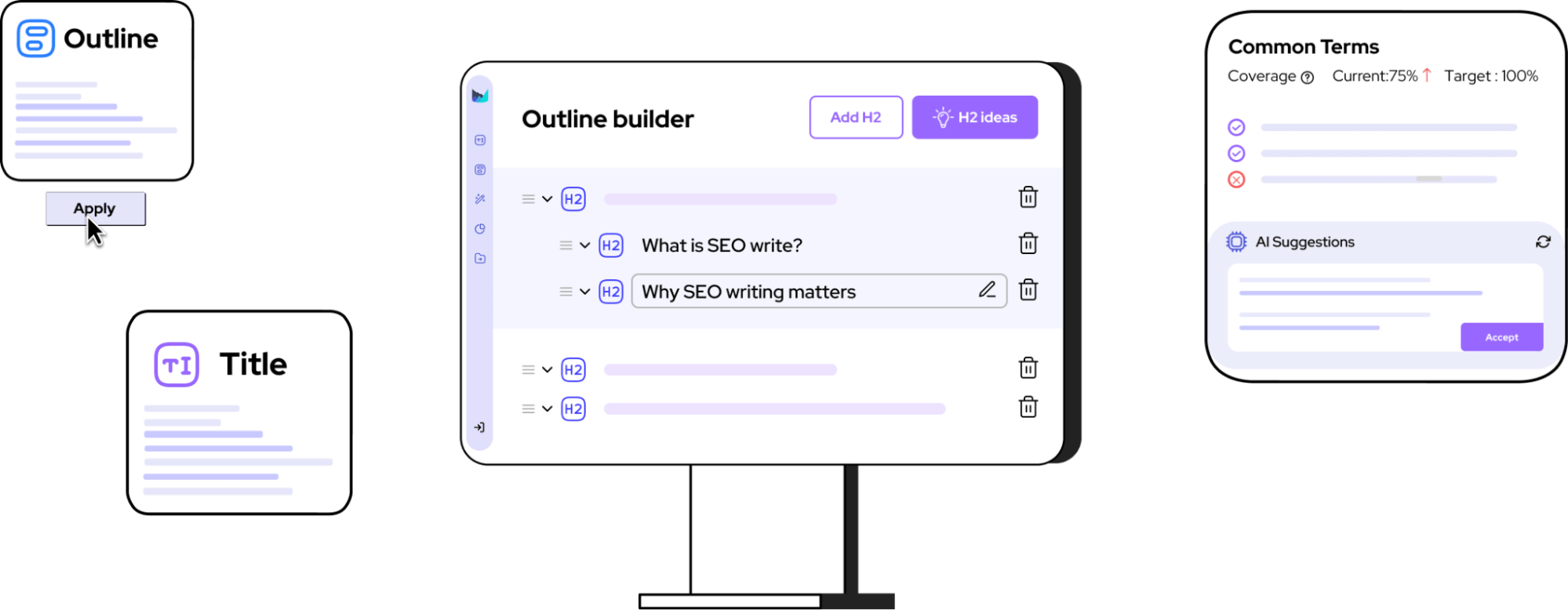
Outranking’s AI SEO analyzes E-E-A-T and content structure
The AI writer is built directly into the SEO analysis editor. As our team wrote, Outranking gave us real-time suggestions based on SERP data. We watched our live Content Score go up as we added suggested NLP keywords and topics. It also warns you about keyword stuffing or thin content.

Outranking’s AI SEO writing offers real-time suggestions and guidance
We found this makes the writing experience very structured—perfect if you want clear guidance, but a bit restrictive if you just want creative freedom.
We found the SEO Brief generator to be a massive time-saver. It automates hours of our manual research by building a complete brief with target word counts, NLP & semantic terms, competitor analysis, and AI-generated outlines. The briefs are shareable (via Google Docs or PDF) and become the perfect roadmap for any writer on our team.
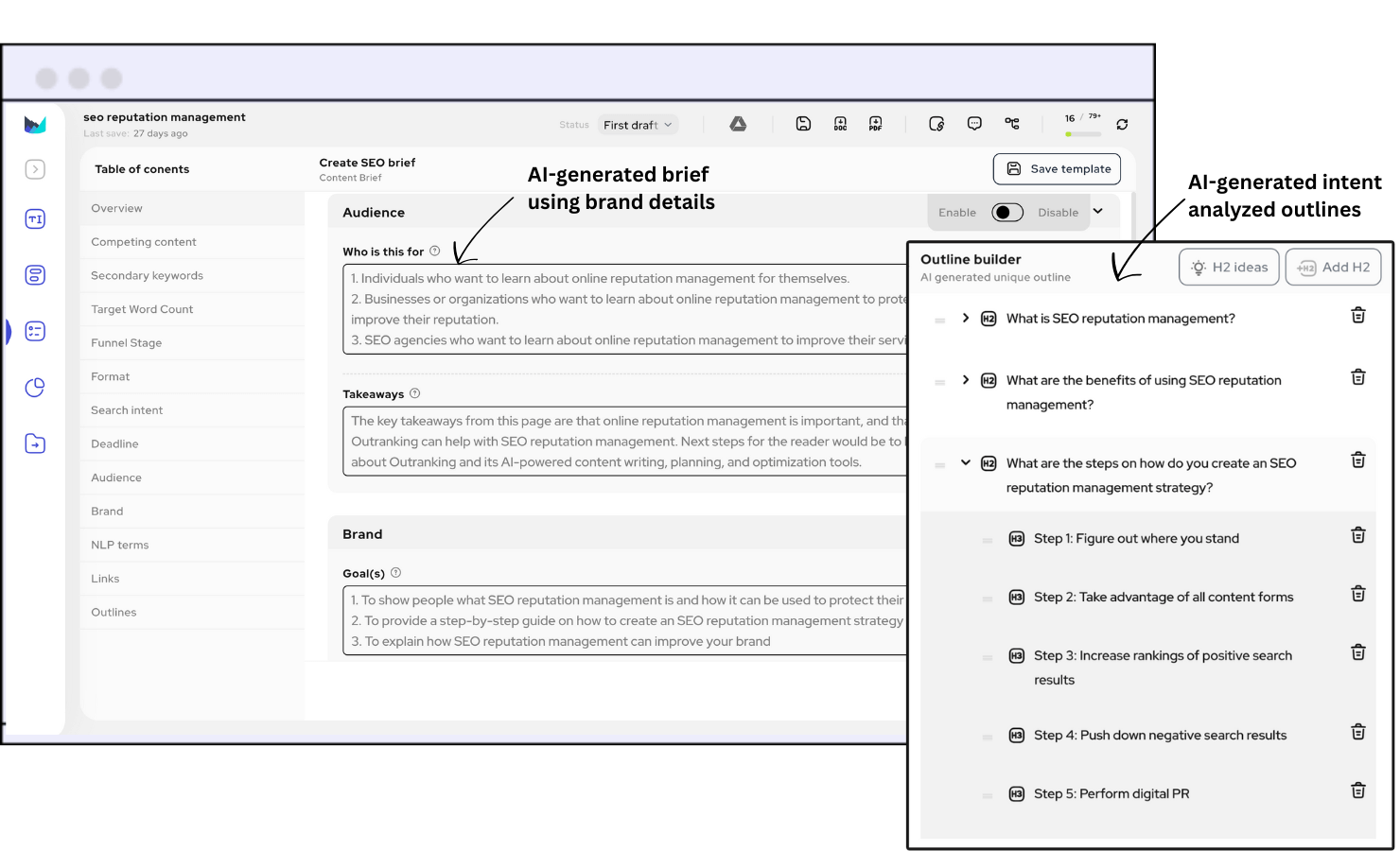
Outranking’s SEO Brief automates research and outlines
Going beyond single articles, the Strategy module focuses entirely on building Topical Authority. It helped our team stop chasing individual keywords and start building keyword clusters. The tool identifies content gaps and helps prioritize a complete publishing plan. For us, it felt like having an SEO strategist mapping out our entire content pillar strategy.

Outranking’s Strategy module builds Topical Authority with keyword clusters
|
Pros |
Cons |
| ✅ Unique “Concepts” feature pulls data from top-ranking pages
✅ Comprehensive SEO toolkit with 40+ optimization factors ✅ Excellent for long-form content (2000+ words) ✅ Automatic internal linking saves massive time ✅ Advanced keyword clustering (up to 100K keywords) ✅ One-click WordPress publishing ✅ Integrates with Google Search Console and Analytics |
❌ AI-generated content can feel generic without editing
❌ Limited capabilities for short-form marketing copy ❌Moderate learning curve—requires basic SEO knowledge ❌ No performance prediction like Anyword offers ❌ Credit consumption can be high with “Concepts” feature ❌ Support quality varies according to some user reports |
To see where each tool really shines, our team gave them two real-world jobs we do every single week
Our team’s test was a 2,000-word SEO article on “Email Marketing Automation Tips,” where ranking was the only goal.
We took this to Outranking, and it was night-and-day. It analyzed the SERPs, then handed us a massive Content Brief detailing content gaps and related keywords. We used its “Concepts” feature to pull real stats from high-authority sources. The proof for our team: the article (which scored 87/100 on its scale) ranked on page two within three weeks.
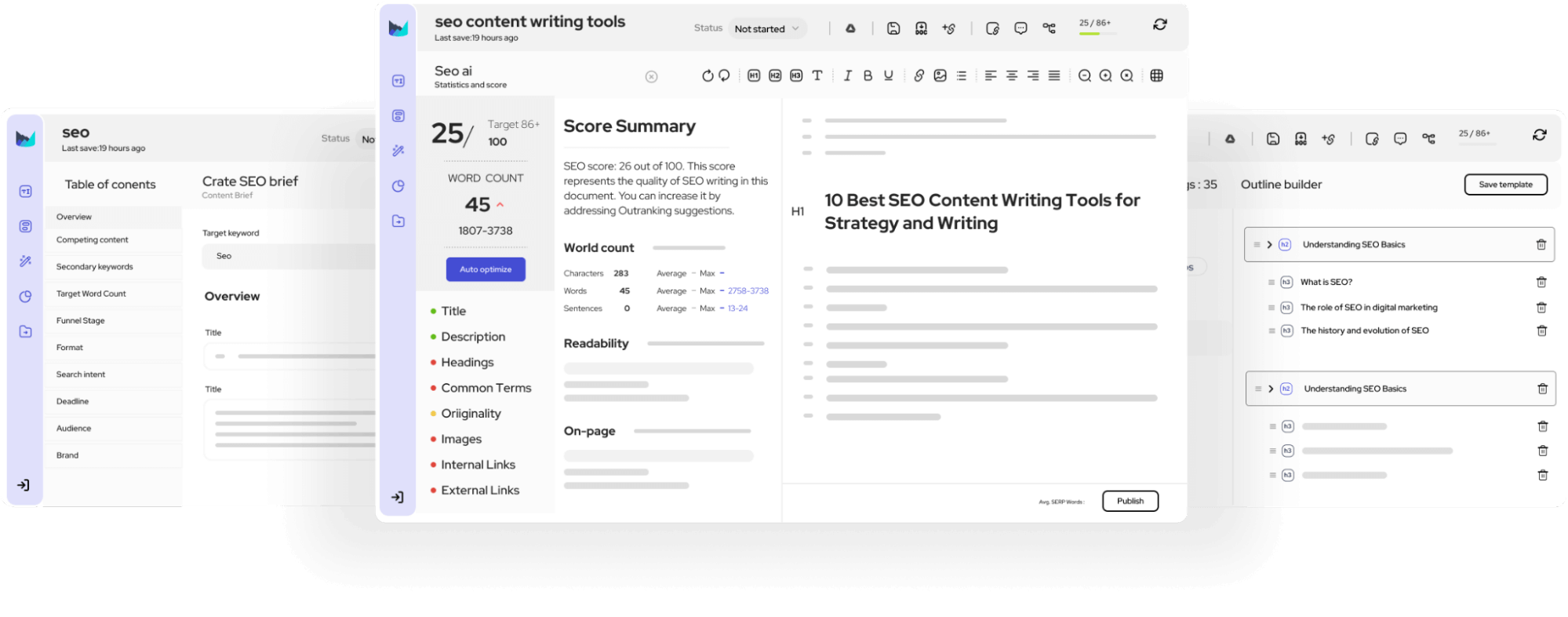
Outranking excels in SEO blog posts with SERP analysis and content gaps
We then tried Anyword. Honestly, it was the wrong tool. It gave us a catchy intro but had zero SEO depth. No SERP analysis, no keyword data, no content gaps. The draft would have required hours of manual optimization.
Winner: Outranking
For our next test, our team wrote Facebook ad copy for a SaaS product. Anyword completely dominated this task.
In under a minute, it generated 15 variations, each with a performance score. The top-scoring version stunned us, predicting a 23% higher engagement rate than our team’s original copy. It let us instantly optimize for conversion goals, test CTAs, and even target demographics. The final copy was benefit-focused and ready to publish.
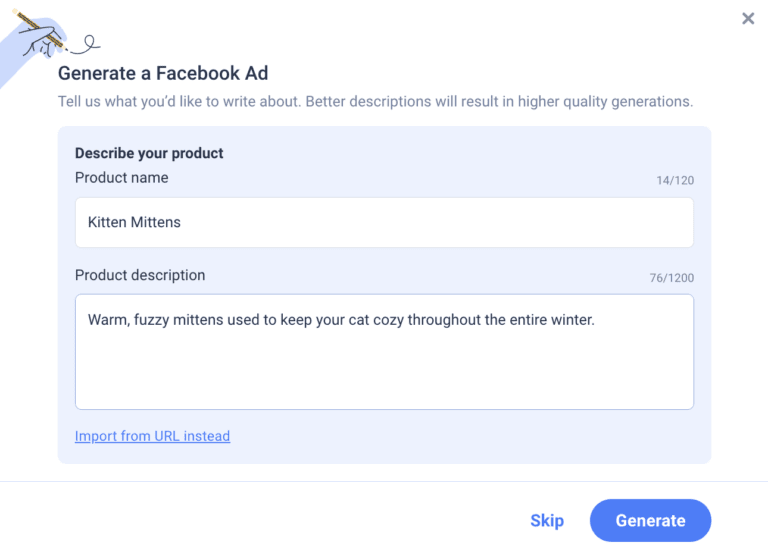
Anyword outperforms in ad copy with variations and performance prediction
We then tried to do the same in Outranking. As we expected, the features simply don’t exist. It has no performance prediction, no variation generation, and zero conversion-focused optimization.
Winner: Anyword
Our team quickly realized that both tools “research,” but they research completely different things.
Outranking is a pure SEO research powerhouse. It’s built to provide deep SERP analysis, competitor content breakdowns, keyword difficulty scores, and search volume data. We used it to build keyword clusters and find new content opportunities all in one place.

Outranking excels in SEO research with SERP analysis and keyword clustering
Anyword, on the other hand, has almost no SEO research features. It can’t do keyword research or SERP analysis. Its “research” is all about analyzing a target audience to suggest better messaging angles for conversion.
Winner: Outranking
|
Pricing Question |
Anyword |
Outranking |
| Free Trial? | Yes, 7-day free trial. | No clear “free trial.” The Starter plan ($19/mo) acts as a low-cost entry. |
| Free Plan? | No. | No. |
| Credit Card for Trial? | Yes, required to start the 7-day trial. | N/A (Starter plan is a paid plan). |
| Refund Policy? | Not clearly listed on the pricing page. | Not clearly listed on the pricing page. |
| Upgrade/Downgrade? | Yes, you can change plans. | Yes, you can change plans. |
| Key Pricing Metric | Performance Predictions (Starter plan is limited) | SEO Documents (Starter plan is limited) |

Anyword Pricing Plan
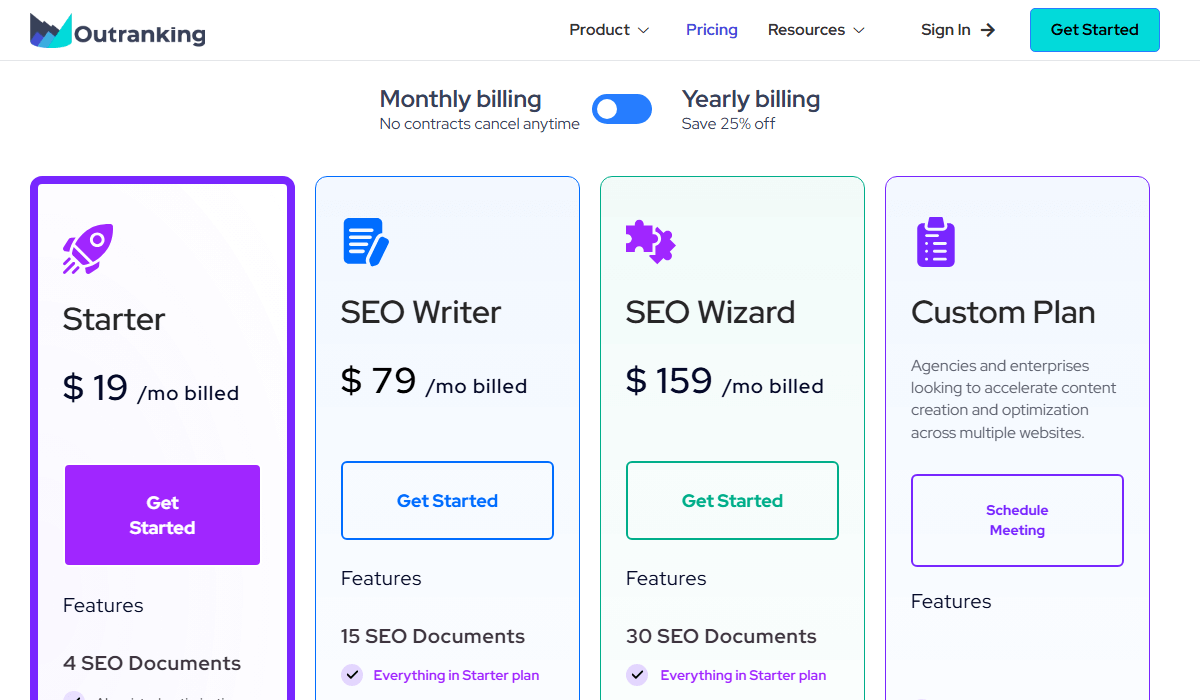
Outranking Pricing Plan
Here’s our most concise insight:
Don’t be misled by the “Starter” plans that cost $19 to $49; we consider them to be “paid demos.” Outranking limits its main feature to 4 “SEO Documents,” while Anyword restricts its key feature to 50 “Performance Predictions.” If you want to work effectively as a professional freelancer, the real starting price is the $79 to $99 per month tier.
You may be interested in:
Anyword vs Writesonic: Which is the best for Writers in 2025?
Anyword vs Rytr: Which is the best for Writers in 2025?
After extensive testing, here’s our honest take on the Anyword vs Outranking decision at TechDictionary:
Choose Anyword if:
Choose Outranking if:
The truth? These tools aren’t really competitors—they serve different purposes. The real question isn’t “Anyword vs Outranking,” but rather “What’s my primary content goal?” If it’s conversions, go with Anyword. If it’s rankings, choose Outranking.
If you found this comparison helpful, subscribe to our newsletter for more in-depth tool reviews and content marketing strategies!

